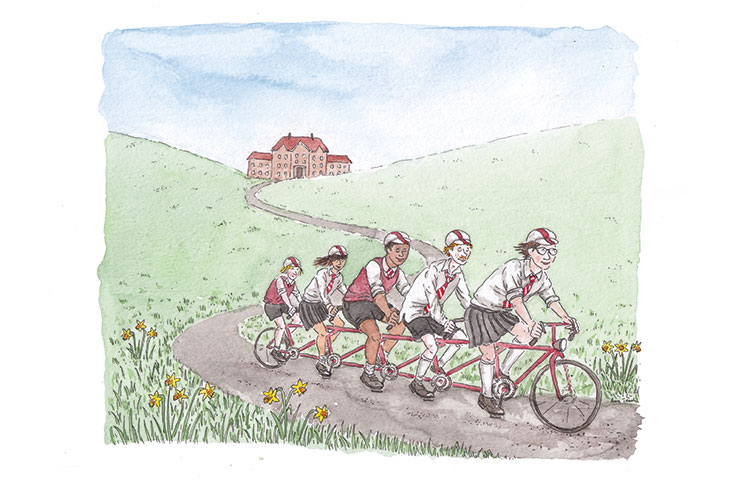In large cities, a school can weave itself into the fabric of its locality almost without anyone noticing it’s there. But in smaller towns and villages a school, particularly a large one, can play a much greater part in the day-to-day life of its inhabitants.
In some towns and villages, the school is even the focal point. Take Peaslake in the Surrey Hills. In 1993, the village school was closed down as it was considered ‘too small’ to be viable. When a campaign by local residents and parents to keep it open failed and government funding was removed, the Peaslake Schools Trust was formed.
For three years the school operated in a private home; then, in 1996, the original school buildings were reclaimed by the school, thanks to the efforts of 18 households who raised more than £180,000. In 1997 it returned to its previous buildings, and in 2013 the school became part of the maintained sector again, as a free school.
Parents of Peaslake pupils play an active role in school duties, with a particular emphasis on fundraising. It creates a huge sense of loyalty.
In the case of some of England’s larger schools, whole villages — if not towns — have grown up around them. Eton is probably the most famous example: the town exists, essentially, because of the school. Until the 1400s it was a small hamlet, but in 1440 Henry VI chose it to be the location for his new school. The high street formed the main artery of the college, and much of the land around the existing hamlet was given over to it.
The population of Eton town is just over 2,000, while there are more than 1,000 boys at the school.









Comments
Join the debate for just £1 a month
Be part of the conversation with other Spectator readers by getting your first three months for £3.
UNLOCK ACCESS Just £1 a monthAlready a subscriber? Log in